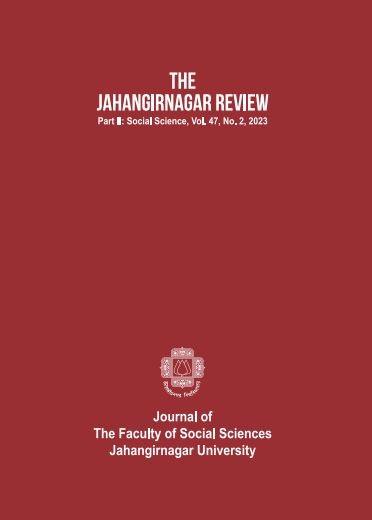Anthropogenic Delta in a Floodplain GIS and Remote Sensing Approach
Main Article Content
Abstract
Delta is the Earth’s surface most recently formed landform. The deltaic plains of Bangladesh are likewise well known, but the idea of an anthropogenic delta is new. An infrequent Anthropogenic delta emerged in the middle of the nation. According to the study, an antropogenic delta developed in the Markas Beel area of the Kaliakair Upazila in the Gazipur District. Gazipur district is one of the most prominent industrial districts in Bangladesh where waste management practice is not doing in an effective way. Industrial wastewaters flow into the khal which are deposited in the Markas Beel, where they continue over time and form a delta. As the deposits are not natural, rather they are products of industrial manufactures and processes, it can be regarded as an anthropogenic formation. Total area of the delta is approximately 70 acres (2022). The morphology of Markas delta is waste dominated delta and bird’s foot type delta whose shape is elongated. Both primary and secondary data have been used in the study. Data was gathered by observation and Google Earth Pro; timeseries data was obtained from Google Earth Pro. QGIS software was used to process the data using Georeferencing and Digitization procedures.

